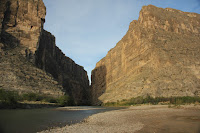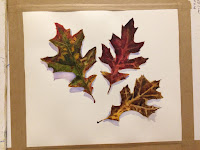 |
| Barton Creek, Morning, 9x12" |
Winter has finally arrived, but I got out to do a little painting this past autumn, whenever I had the chance, and the weekend weather cooperated. In this part of Texas, "winter" usually just means rain on the weekend and clouds or sun the rest of the week (when I'm at work), with the occasional chilly day. Barton Creek and Bull Creek are my go-to places in Austin.
 |
| Trattoria Lisina, morning 9x12" |
I also made another stop at
Trattoria Lisina in Driftwood to paint the exterior of the restaurant. It's a terrific setting looking out over a vineyard. I think this was my 3rd time to paint the grounds.
I refuse to be sucked into the whole Black Friday shopping thing, so once again I went outside. This year found me in Luckenbach, Texas in a misting rain painting the iconic post office.
 |
| Luckenbach, TX , Rainy Morning 9x12" |
 |
| Painting the Luckenbach, TX Post Office |
 |
| Guthrie Bldg, Kerrville, Night 9x12" |
Afterward, I went to Kerrville, where I set up to paint one of the Christmas-decorated buildings.
I've been having a lot of fun recently with small sketches in my
watercolor sketchbook. I mainly have been doing these during my lunch hour at work.

Ringo Starr turned 76 this year, and I painted a drumstick in my sketchbook in his honor. By an odd coincidence, I had painted a Granny Smith apple on the previous page of the book.

On my office windowsill I have a Happy Buddha figurine that was given to me a few years ago as a souvenir. The shells are from the time I took a flight on a
WWII B-17 bomber (it was awesome!) The copper one is a
50 caliber, and the blue one is 70 mm (I think).
These sketchbook pages are 5 x 8" and feature things I have in my desk, or I found in the supply cabinet at work. I've owned that "Snoopy Harp" since about 1970. I can verify that it REALLY hurts when it whacks against your teeth, but I can sound like a Cylon from the original Battlestar Galactica, or imitate Peter Frampton's talking guitar!
For some unknown reason, there were clothespins in the pencil drawer of our office supply cabinet. I pressed a few into service as models for about 45 minutes.
I think Eberhard Faber Design Markers were the best magic markers on the planet for doing marker comps. They were discontinued, but I still have a few that I hoard jealously. This is another way of saying that I can't bring myself to get rid of them. They also make good subjects for watercolor sketches.
I have painted the inside of quite a few of these mini Altoids tins with
white appliance enamel, so I can make watercolor kits with different color palettes, or give them to people who might want to make their own portable set. They will hold 5 half-pans of watercolor. I buy empty ones and fill them from tubes. Many art supply stores carry these empty pans, or you can find them on ebay (cheap!), if you are willing to wait a month to get them shipped from Hong Kong! They are great for a travel set when used with water brushes like the one I painted in this page from my sketchbook.
 |
| Altoids travel set and water brush |
 |
| color chart (5 colors) |
Here are the 5 colors in the one shown above (Turner and Daniel Smith), and a chart showing the mixes you can make with them. They are: Hansa Yellow Medium, Sap Green, Phthalo Green (Red Shade), Phthalo Blue, and Alizarin Crimson.
 |
| watercolor tubes |
And finally, a 3.5" x 5.5" sketchbook page
 |
| Altoid Smalls Cinnamon |

























































